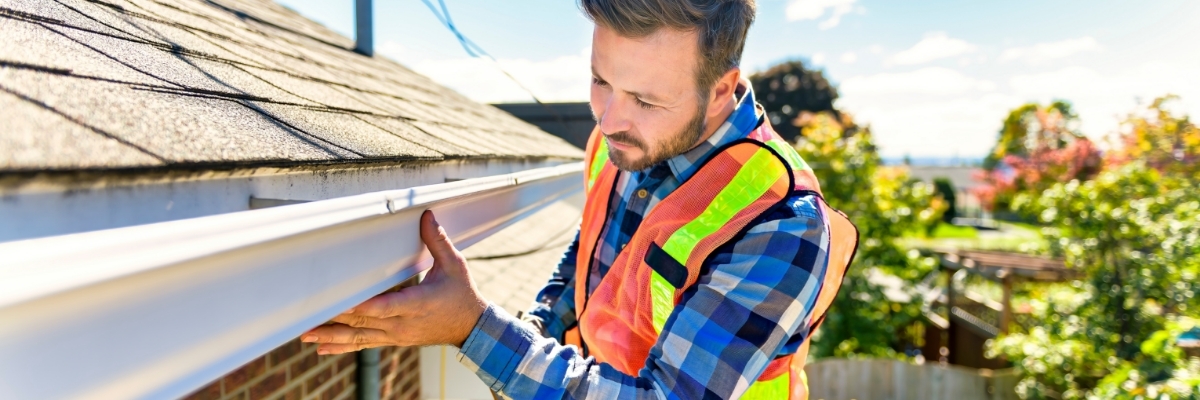Performing Safer Home Inspections with Drone Technology

According to recent data, falls continue to be the main cause of death for roofing contractors. While home inspectors aren’t in the exact same line of work, their job requirements are equally as dangerous, and they are just as much at risk for the same hazards that roofers encounter.
Physically traversing roofs to assess damage and complete inspections comes with inherent perils, including slips, ladder usage, insect encounters, and much more. On top of risking your life on a regular basis to conduct roof assessments, you have to then be able to observe every detail of the roof’s condition accurately and produce impressive reports with comprehensive analysis for customers.
In this blog, you’ll learn how drone technology can greatly reduce the risk involved in roof inspection and why home inspection companies are increasingly turning to these solutions to keep inspectors safe.
Roof Inspections: The Most Dangerous Part of a Home Inspection
There are many factors that contribute to the high level of hazard associated with roof inspections.
- Heavy pitches: As construction preferences change and consumer demand alters architecture, modern homes have trended toward heavier-pitched roofs. Steeper pitches allow homeowners to opt for more attic space, more opportunities for skylights, and better drainage. However, the heavier the pitch, the more dangerous the inspection.
- Hard-to-reach parts of the roof: Many areas of the roof could potentially be shrouded by trees or inaccessible for other reasons. Attempting to bypass structures like fences or vegetation also introduces a level of risk for the inspector.
- Damaged roofs: Walking across roofs with holes, crevices, or other inconsistencies is dangerous—especially if any part of the roof has collapsed.
- Ladder use: Anytime you introduce a ladder to any inspection, you increase the danger of the job. According to the U.S. Bureau of Labor Statistics, there were 161 fatal work injuries “from which ladders were the primary source” in 2020.
- Insects: No inspector wants to encounter a wasp nest or other infestation in, on, or around any roof.
- Scaffolding use: Similarly to ladder use, scaffolding adds a layer of hazard to a roof inspection as it is designed to be a temporary access point.
- Roofs with complicated designs and/or pitching: Aside from heavy pitches, roofs with unusual ones present just-as-dangerous settings for inspectors. Oddly angled pitches and/or unusual construction make inspections more difficult and risky.
Drone technology can solve for all these hazards in a straightforward way, by eliminating the need for inspectors to get up on the roof.
Making Roof Inspections Safer with Drones
Drones allow home inspectors to capture high-quality roof imagery and automatically detect potential damage – all from the safety of the ground. Inspectors never have to encounter the aforementioned risks and can focus on producing highly accurate assessments instead of skirting danger on the job.
However, it’s important to choose the right drone solution for your needs. While there are many different types of drones available on the market, there are few things you should look for in a drone for roof inspections. For example, ease-of-use, camera quality, and obstacle detection are some of the more important considerations.
If you opt for a drone solution like EagleView Assess™, you’ll be able to capture ultra high-resolution aerial imagery and create a complete digital reproduction of the roof. This allows you to obtain clear, detailed data on all parts of a roof—even the hard-to-reach areas. Assess drones also feature autonomous flight and automated obstacle avoidance, which means the drone practically flies itself. So, you can rest assured you’ll capture high-quality imagery no matter who is operating the drone.
By leveraging a drone solution, you’ll obtain a more thorough view of the roof than you would with a manual inspection, and you’ll cut the most dangerous components of roof inspection work, while also improving assessments.
Of course, there are times you may need to physically inspect a roof, even if you’re using a drone. In these instances, the imagery from the drone can be helpful in identifying any potential risks on the roof, so you’re aware of them before you get up there.
In addition to significantly improving safety for inspectors, drones offer the added benefit of cutting costs and time involved in roof inspections. With safer business practices, you’ll experience lower insurance premiums and avoid costs associated with workplace injury.
EagleView Assess Drones for Home Inspections
With the high cost of roof repairs, an accurate assessment of roof condition and quality is a crucial element of a professional home inspection. Fortunately, drones have emerged as a safer, more accurate way for home inspectors to assess roofs – without having to set foot on one. Solutions like Assess – which feature built-in software specifically designed for roof inspections – offer home inspectors a simple, safer way to gather roof condition data and deliver an exceptional customer experience. Get in touch with us to learn more about how Assess can elevate your home inspection business.
